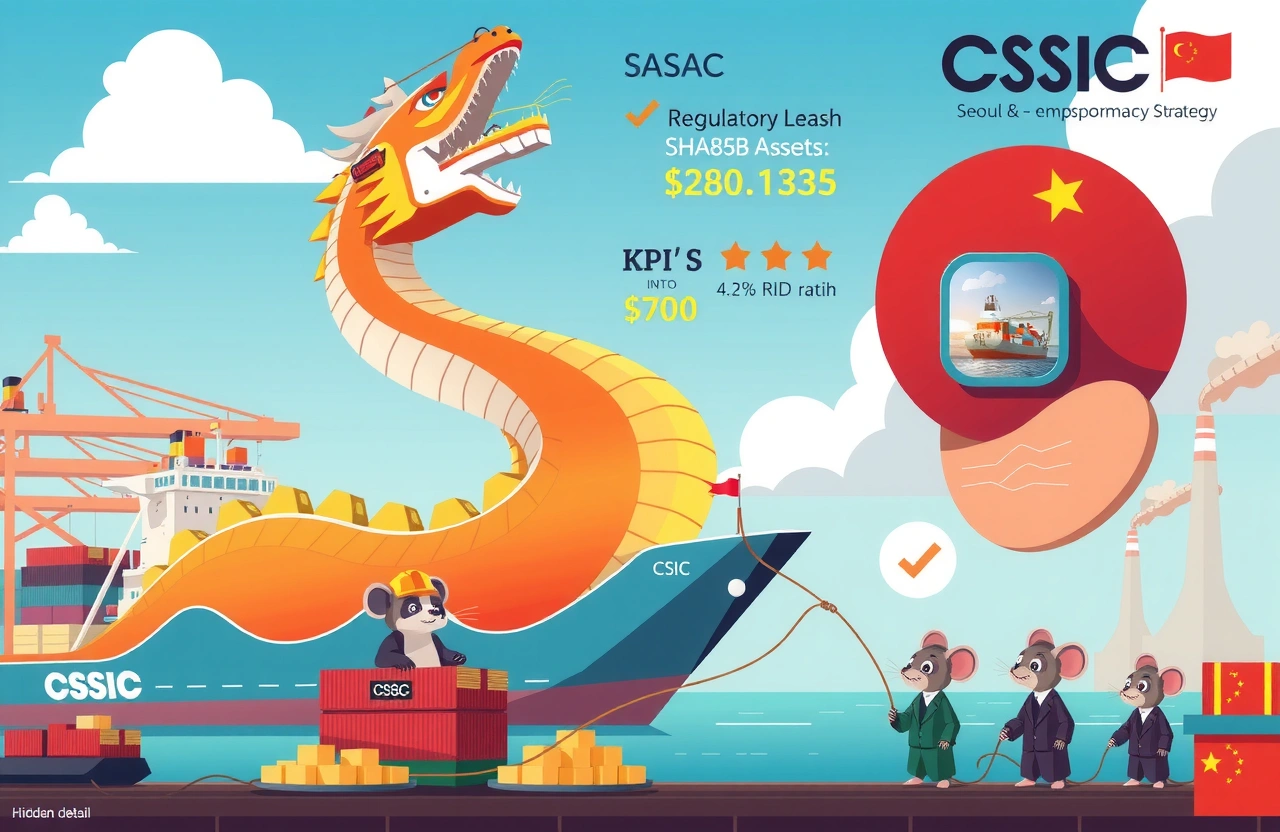A transformative consolidation reshaping China’s shipbuilding landscape cleared its final regulatory hurdle as the Shanghai Stock Exchange approved the landmark merger between two state-owned giants. China State Shipbuilding Corporation Limited (CSSC) moves toward absorbing China Shipbuilding Industry Company Limited (CSIC), marking what analysts call the most significant restructuring in China’s maritime industry this decade.
Key Milestones
- July 4, 2025: SSE formal approval signals last major clearance before merger finalization
- September 2024: Initial suspension and announcement signaled restructuring intent
- May 2025: SSE formally accepted absorption proposal for detailed review
- Completion pending CSRC registration – expected within weeks
- Creates world’s largest shipbuilder by asset valuation ($58 billion combined)
The Path to Regulatory Approval
Following intensive review, the SSE’s Mergers and Acquisitions Review Committee concluded that the shipbuilding met all restructuring criteria and disclosure requirements during its eighth 2025 hearing session. This regulatory greenlight validates fifteen months of meticulous preparation since both entities halted trading in September 2024.
Critical Review Benchmarks
The committee evaluated three core dimensions according to standard restructuring protocols:
- Business continuity assurance post-merger
- Full transparency regarding shareholder impacts
- Compliance with national strategic industry guidelines
"The seamless integration plan demonstrating preserved employment and contract obligations proved decisive," noted regulatory analysts at CICC.
Final Implementation Hurdles
Before this shipbuilding merger becomes operational, two steps remain:
- Formal registration by China Securities Regulatory Commission
- Execution of share conversion procedures over approximately six weeks
Mechanics of the Merger Structure
This shipbuilding merger operates through a precise share conversion mechanism. CSSC will issue new shares to CSIC shareholders at a fixed 1:0.1335 exchange ratio – meaning for every CSIC share held, investors receive 0.1335 CSSC shares.
Share Conversion Details
The transaction unfolds with mathematical precision:
- Pre-merger CSSC outstanding shares: 4.472 billion
- Pre-merger CSIC outstanding shares: 22.802 billion
- New shares issued: Approximately 3.044 billion
- Post-merger total shares: Approximately 47.444 billion
Resulting Ownership Structure
The landmark shipbuilding merger reshapes corporate control as follows:
- China Shipbuilding Industry Group: 26.71% ownership (2.007 billion shares)
- China State Shipbuilding Corporation Group: 49.29% controlling stake (3.705 billion shares)
- State-owned Assets Supervision Administration Commission (SASAC): Ultimate controlling authority unchanged
Addressing Competitive Overlap
This shipbuilding merger directly tackles longstanding operational redundancies. Both entities operated with significant market overlap across naval construction, commercial vessels, and marine equipment – creating inefficient competition between state-owned siblings.
Pre-Merger Business Alignment
The absorption eliminates competition through complementary consolidation:
- CSSC Dominant Areas: Commercial shipbuilding (64% revenue), ship repair services, offshore engineering platforms
- CSIC Core Strengths: Naval defense contracts (72% classified government projects), specialized marine equipment, deep-sea exploration technology
- Overlap Zones: Container ship manufacturing, LNG carrier construction, marine propulsion systems
Post-Merger Synergy Projections
The combined entity anticipates significant advantages:
- Estimated $920 million annual cost savings by 2028
- Consolidated R&D expenditure increased to 4.2% revenue (vs 2.8% industry average)
- Streamlined procurement across 3,200+ suppliers
- Rationalization of seven overlapping provincial shipyards
Strategic Market Implications
This shipbuilding merger positions China to challenge Korean dominance in high-value vessel construction. Industry analysts anticipate three immediate impacts:
Global Contract Competition
The unified entity immediately becomes the frontrunner for:
- Royal Dutch Shell’s pending LNG tanker contracts
- Brazilian offshore oil platform rebuild program
- International Seabed Authority mining vessel commissioning
Domestic Industry Ripple Effects
Smaller private shipyards face strategic decisions:
- Specialization in niche vessel types
- Component supplier partnerships
- Consolidation among regional players
Future Integration Roadmap
The SSE approval triggers carefully sequenced implementation:
Regulatory Completion Phase
CSRC registration expected within three weeks based on:
- Priority national industry restructuring status
- Pre-cleared national security compliance
- Concluded minority investor consultations
Operational Consolidation Timeline
- Week 1: Shareholder conversion portal activation
- Week 4: CSIC trading suspension initiation
- Week 6: Formal cessation of CSIC listing
- Month 3: Operational command center establishment
- Q1 2026: Full brand unification rollout
The completed shipbuilding merger establishes an unparalleled maritime industry champion with balanced military-commercial capabilities positioned for global strategic advantage. Investors should monitor CSSC announcements for conversion details while industry participants must brace for seismic shifts across the maritime value chain. Expect comprehensive integration progress reports ahead of October implementation.




